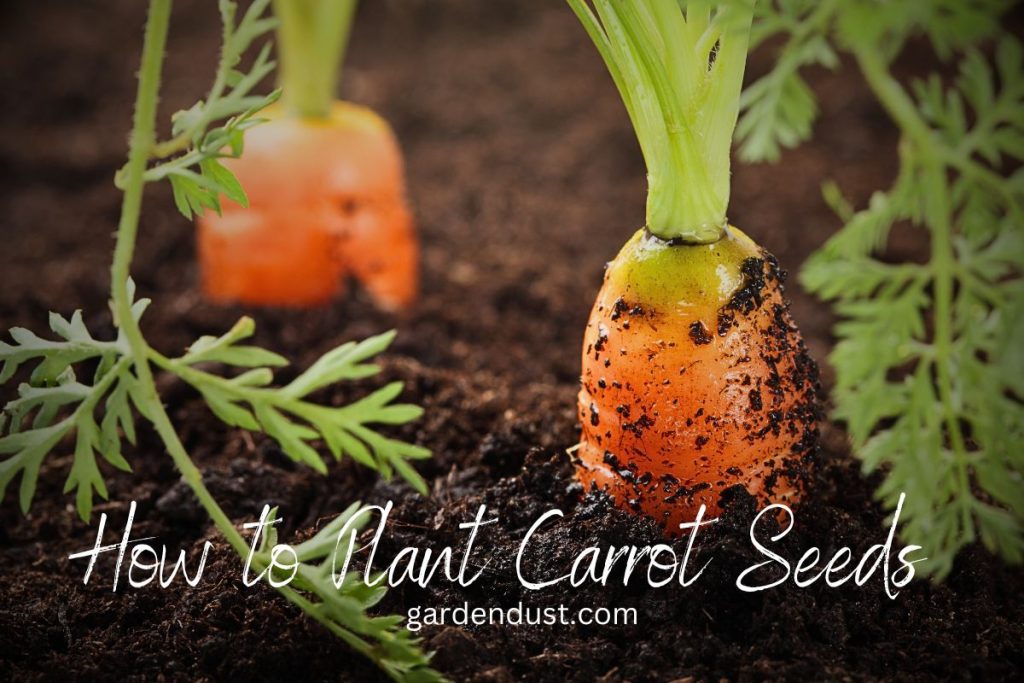Carrots are a popular and nutritious vegetable that can be easily grown in your backyard garden. With their sweet, crunchy roots and versatility in the kitchen, planting carrot seeds is a rewarding endeavor for both novice and experienced gardeners. In this article, we will guide you through the step-by-step process of how to plant carrot seed to ensure a successful and abundant harvest.
Selecting the Right Time and Location:
Carrots are a cool-season crop, preferring mild temperatures for optimal growth. The best time to plant carrot seeds is in early spring, when the soil temperature reaches around 50 to 65 degrees Fahrenheit (10 to 18 degrees Celsius). In regions with mild winters, you can also plant carrots in the fall for a late-season harvest.
Choose a sunny location for your carrot bed. Carrots require at least 6 to 8 hours of sunlight each day to thrive. Additionally, ensure that the soil is well-draining, as waterlogged soil can lead to root rot and stunted growth.
Preparing the Soil:
Carrots grow best in loose, sandy soil that allows their roots to develop freely. Before planting carrot seeds, prepare the soil by removing any weeds, rocks, or debris. Use a garden fork or a tiller to loosen the soil to a depth of 12 to 15 inches (30 to 38 centimeters). Break up large clumps and work in some compost to improve the soil’s fertility and structure.
Sowing Carrot Seeds:
Carrot seeds are small and require careful handling during sowing to ensure even distribution. Here’s how to sow carrot seeds properly:
- Create Furrows: Use a garden rake or the edge of a hoe to create shallow furrows in the prepared soil. The furrows should be about ¼ to ½ inch (0.6 to 1.3 centimeters) deep and spaced at least 12 inches (30 centimeters) apart to allow enough space for the carrots to grow.
- Seed Spacing: Carrot seeds are tiny, so it’s essential to sow them evenly. To achieve this, mix the carrot seeds with a small amount of sand or vermiculite to increase their volume. This step, known as “seed coating,” makes it easier to handle the seeds and ensures they are spaced appropriately.
- Sow the Seeds: Carefully sprinkle the coated seeds along the furrows. Aim for a spacing of about 1 to 2 inches (2.5 to 5 centimeters) between each seed to give the growing carrots ample room to develop.
- Cover the Seeds: Gently backfill the furrows with soil, covering the carrot seeds. Be careful not to bury them too deeply, as this can hinder germination. A light layer of soil or vermiculite should suffice.
Read Also :-10 Common Problems With Garden-Grown Carrots and Solutions
Watering and Maintenance:
After sowing the carrot seeds, water the bed thoroughly but gently to settle the soil around the seeds. Avoid heavy watering, as this can displace the seeds or cause them to cluster together. Throughout the germination period, keep the soil consistently moist until the carrot seedlings emerge, usually within 10 to 14 days.
Once the seedlings have sprouted, thin them to provide adequate spacing for healthy root development. Ideally, thin the seedlings to about 2 to 3 inches (5 to 7.5 centimeters) apart. This step may be difficult, but it is essential for preventing overcrowding, which can lead to misshapen carrots.
Mulching around the carrot plants can help retain moisture, suppress weeds, and maintain a more consistent soil temperature. However, be cautious not to cover the carrot seedlings with mulch, as this can obstruct their growth.
Pest and Disease Control:
Carrots are generally low-maintenance and relatively pest-resistant. However, some common pests, such as carrot flies and aphids, may pose a threat to your crop. Consider planting companion plants like onions, leeks, or garlic, which can help repel carrot flies.
Inspect your carrot plants regularly for any signs of pests or diseases. Early detection allows for prompt action, reducing the risk of widespread damage.
Harvesting Carrots:
Carrots are typically ready for harvest 60 to 80 days after planting, depending on the variety. Look for the characteristic orange color and firm texture to determine if they are ready. Gently loosen the soil around the carrot before pulling it out to avoid breaking the root.
Planting carrot seeds can be an enjoyable and satisfying experience, especially when you see the bright orange roots emerge from the ground. With the right timing, soil preparation, and careful sowing, you can grow a plentiful harvest of delicious and nutritious carrots in your home garden. Remember to provide adequate care, monitor for pests and diseases, and enjoy the rewards of your efforts as you savor the sweetness of homegrown carrots in various culinary delights. Happy Gardening…







